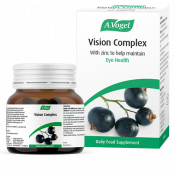An introduction to styes
A stye is a small, painful lump that appears on the eyelid, a bit like a spot or pimple. However, this stye can sometimes grow to become a sizeable lump, causing discomfort and pain. They can occur on the inside of the eyelid (internal stye), which tends to be more painful, or they can occur on the outside, normally along the edge of the eyelid. They can occur on both the upper and lower eyelids.
What are the causes of styes?
Styes result from an infection or inflammation of a skin gland or hair follicle, usually caused by staphylococcus bacteria. The exact cause is different for internal and external styes.
- External styes tend to be caused by an infection of the eyelash follicle, sebaceous gland (a gland that produces oil, or sebum) or an apocrine gland (a gland that produces sweat)
- Internal styes tend to be caused by an infected meibomian gland – a gland that produces a different oily substance.
In some cases, styes can result from a condition called blepharitis, which is also caused by an infection and can, in some cases, be chronic. Styes can also occur as a result of poor makeup hygiene.
What other symptoms might a stye cause?
There are a number of secondary symptoms that may accompany a stye, including:
- Watery eye – the stye can irritate the eye, causing it to try and flush out the irritant by producing excess tears
- Itchy, irritated eye – the eye may feel itchy and irritated, and it may feel as though there is something stuck in it, especially when you blink
- Swollen eye – sometimes the area around the stye can begin to swell, and sometimes the whole eyelid may become puffy and swollen.
How to treat a stye naturally
Styes usually resolve themselves without the need for treatment. This process can be helped along with a number of natural remedies:
- Apply a warm compress – soak a flannel in warm (not hot) water and place over the eye for five to ten minutes. The warmth of the compress will soothe irritation and encourage the stye to drain, which helps it to heal faster
- Keep the affected eye clean by removing any dirt or discharge
- If your stye is painful, you can use over-the-counter painkillers such as paracetamol or ibuprofen
- Avoid using eye makeup while you have a stye – this will slow down the healing process, and may infect your makeup, making it unsafe for further use.
It is vital that you do not try to burst the stye yourself, as this could cause more damage or further infection.
How to prevent styes
There are a number of things you can do to prevent a stye appearing in the first place. If you suffer from recurring styes, these tips may be particularly useful.
- Keep your eyes clean – this means washing your face regularly with mild soap such as baby soap, and wiping off makeup before you go to bed. A gentle rubbing action will help lift debris from the eyelids. You should take particular care to keep the base of your eyelids clean, as this is where styes tend to occur
- Use eye drops – the use of eye drops can help clear dirt and debris out of your eye, preventing bacteria from building up
- Apply a warm compress if certain sections of your eyelashes feel tender – this could be an indication of a developing stye
- While you should always avoid touching the eye or eye area, if you have to do so, for example if inserting or removing contact lenses, make sure you wash your hands before and after doing so
- Follow our tips for better makeup hygiene, which will help stop infection finding its way into the eye.
Are there any herbal remedies that might help?
Euphrasia is a herb that has been used to treat eye problems since the 14th century. It is also known as Eyebright because of its traditional uses in eye health. We recommend Euphrasia in eye drop form, such as A.Vogel’s Eye Drops, which will help to clean out any unwanted discharge, dirt and bacteria, but will also promote general good eye health.
You may also want to consider our Vision Complex, containing, among other things, lutein and zinc which are essential for promoting good eye health and vision.
Conventional treatments
Generally, styes don’t require much treatment; they usually disappear on their own, or with some simple natural remedies. In some cases, for example if your stye is not improving after a week or two, your GP may decide to drain it. If symptoms are getting worse, your GP may prescribe antibiotics to help your body fight off the infection.








